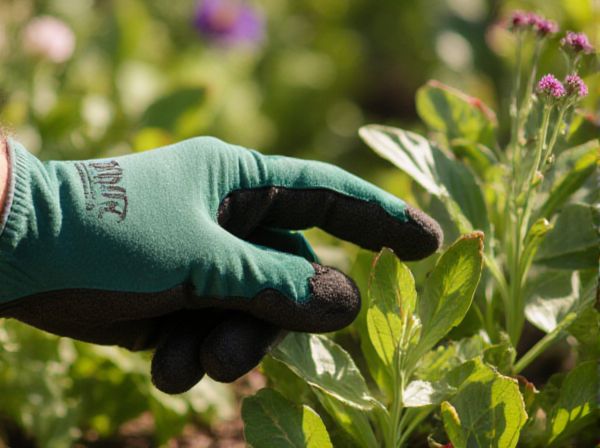
Monocrop System vs Polycrop System Illustration
Monocrop systems involve cultivating a single crop species in a greenhouse, which can simplify management and maximize yield but often reduces biodiversity and increases vulnerability to pests and diseases. Polycrop systems grow multiple crop species simultaneously, enhancing ecosystem resilience, improving soil health, and reducing the need for chemical inputs through natural pest control. Choosing between these systems depends on the grower's goals for productivity, sustainability, and environmental impact.
Table of Comparison
| Feature | Monocrop System | Polycrop System |
|---|---|---|
| Crop Variety | Single crop species | Multiple crop species |
| Soil Health | Higher risk of nutrient depletion | Improved nutrient cycling and soil fertility |
| Pest and Disease Control | Higher susceptibility due to uniform crops | Reduced pest pressure through biodiversity |
| Yield Stability | Dependent on single crop performance | More stable yields from crop diversification |
| Resource Efficiency | Less efficient use of space and nutrients | Optimized space and nutrient utilization |
| Management Complexity | Simple management and monitoring | Requires advanced planning and coordination |
| Economic Risk | Higher risk due to crop failure | Lower risk via diversified income sources |
Understanding Monocrop and Polycrop Systems
Monocrop systems in greenhouses involve cultivating a single crop species on the entire growing area, maximizing resource allocation and simplifying pest management but increasing vulnerability to diseases and soil nutrient depletion. Polycrop systems integrate multiple crop species within the same space, promoting biodiversity, improving pest control, and enhancing soil health by leveraging complementary plant interactions. Understanding these systems aids in selecting appropriate cultivation strategies to optimize yield, sustainability, and greenhouse resource efficiency.
Key Differences Between Monocropping and Polycropping
Monocropping in greenhouses involves cultivating a single crop species over a designated period, often leading to soil nutrient depletion and increased pest vulnerability due to lack of biodiversity. Polycropping integrates multiple crop species within the same space, enhancing soil fertility through complementary root structures and promoting natural pest control via habitat diversity. The key differences lie in ecological impact, resource efficiency, and risk management, with polycropping supporting sustainability and resilience in controlled environment agriculture.
Benefits of Monocrop Systems in Greenhouses
Monocrop systems in greenhouses optimize resource efficiency by allowing precise control over environmental factors such as temperature, humidity, and light tailored to a single crop, enhancing yield and quality. These systems simplify pest management and disease control due to the uniformity of the plant species, reducing the risk of cross-contamination and outbreaks. Monocropping also streamlines planting, harvesting, and maintenance operations, improving labor efficiency and operational scalability in controlled environment agriculture.
Advantages of Polycrop Systems for Greenhouse Gardening
Polycrop systems in greenhouse gardening enhance biodiversity by combining multiple plant species, which improves pest resistance and reduces disease outbreaks compared to monocrop systems. They optimize resource use through complementary root and canopy structures, leading to higher overall yield and soil health. This sustainable practice also increases resilience to environmental stress, promoting consistent productivity year-round.
Challenges and Risks of Monocropping
Monocrop systems in greenhouses face significant challenges including increased vulnerability to pests and diseases due to genetic uniformity, which can lead to widespread crop failures. Soil nutrient depletion occurs rapidly as the same crop continuously extracts specific nutrients, necessitating intensive fertilizer use that may harm the environment. Furthermore, monocropping reduces biodiversity, weakening ecosystem resilience and increasing dependency on chemical interventions for pest and weed control.
Pest and Disease Management: Monocrop vs Polycrop
Monocrop systems in greenhouses often face higher risks of pest and disease buildup due to the continuous presence of a single host plant, which creates ideal conditions for pests to proliferate. Polycrop systems enhance pest and disease management by promoting biodiversity, disrupting pest life cycles, and encouraging natural predator populations that reduce harmful outbreaks. Incorporating multiple plant species in a polycrop system improves overall crop resilience and minimizes the reliance on chemical pesticides.
Soil Health and Fertility: Comparing Both Systems
Monocrop systems often lead to soil nutrient depletion and increased vulnerability to pests due to repetitive planting of a single crop species. Polycrop systems enhance soil health by promoting biodiversity, improving nutrient cycling, and reducing erosion through varied root structures. Studies show polyculture practices increase soil organic matter and microbial activity, boosting long-term fertility and resilience in greenhouse environments.
Yield and Productivity: Which System Performs Better?
Monocrop systems in greenhouses often deliver higher yields per crop due to optimized conditions tailored for a single plant species, resulting in efficient resource use and simpler pest management. Polycrop systems enhance overall productivity by maximizing space utilization and promoting biodiversity, which can lead to improved soil health and reduced pest outbreaks. Yield per individual crop tends to be lower in polycropping, but combined output and sustainability benefits often surpass monocropping in long-term productivity.
Economic Impacts of Monocrop and Polycrop in Greenhouse Settings
Monocrop systems in greenhouses often yield higher short-term profits due to streamlined management and specialized crop production, reducing labor and input costs. Polycrop systems enhance economic resilience by diversifying crop outputs, mitigating market risks, and improving resource utilization efficiency. While monocropping may maximize immediate revenue, polycropping supports sustainable income through crop diversification and reduced vulnerability to pests and diseases.
Choosing the Right Cropping System for Your Greenhouse
Monocrop systems in greenhouses focus on cultivating a single crop species, maximizing specialized care and resource allocation, which can simplify management and increase yield for specific plants. Polycrop systems involve growing multiple crop species simultaneously, enhancing biodiversity, improving pest and disease resistance, and optimizing space utilization through complementary plant interactions. Selecting the appropriate system depends on factors such as crop market demand, greenhouse size, resource availability, and desired environmental control, ensuring optimal productivity and sustainability.
Monocrop System vs Polycrop System Infographic

 gardendif.com
gardendif.com